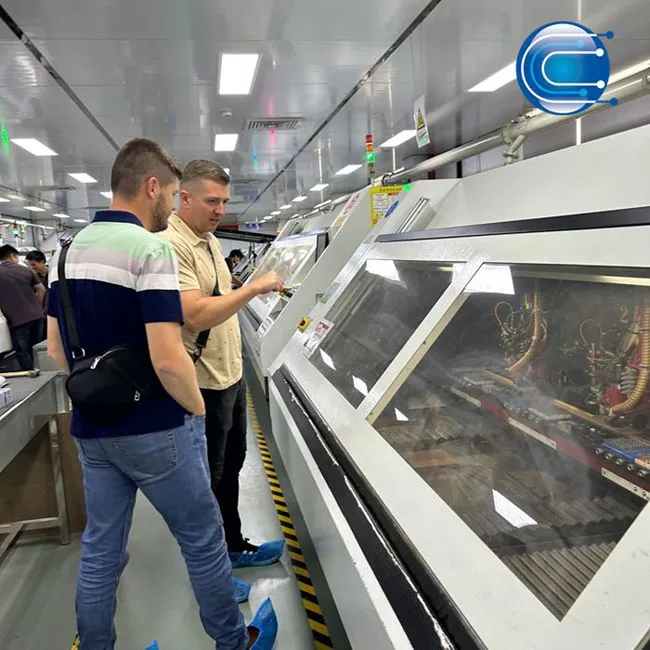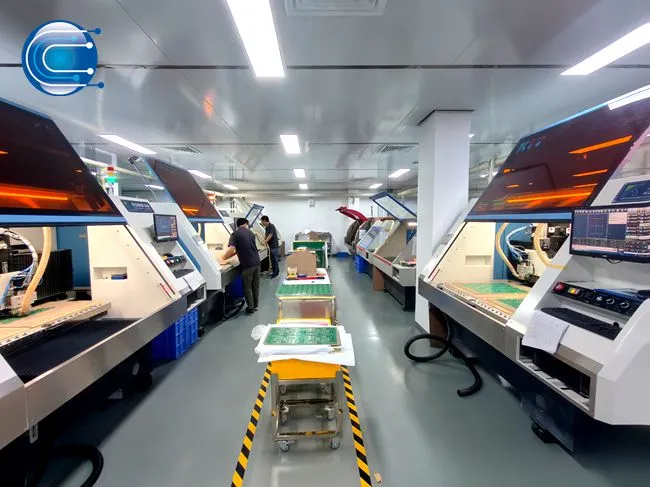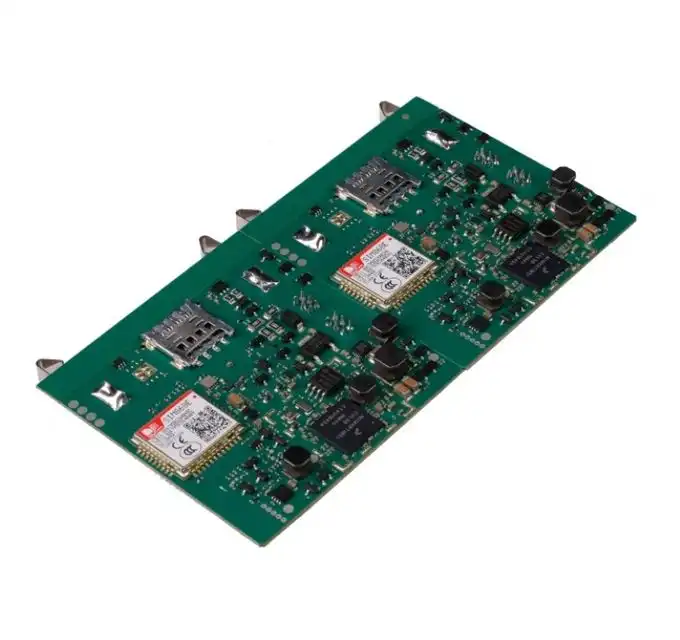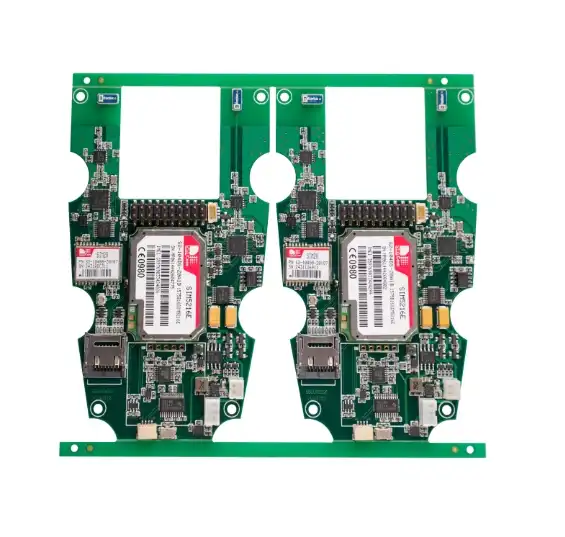Introducing PCB Manufacturing Processes and Capabilities
PCB manufacturing includes a complex arrangement of forms to create the perplexing circuit sheets that control cutting edge hardware. A profound understanding of these forms is basic for both producers and clients to guarantee high-quality comes about. The travel from plan to wrapped up item envelops a few basic steps, each requiring exactness and expertise. The prepare starts with plan and designing, where the circuit format is carefully arranged to meet the particular prerequisites of the application. This arrange frequently includes computer-aided plan (CAD) program and collaboration between engineers and originators to optimize the board's execution and manufacturability.
Once the design is finalized, the actual manufacturing process commences. This typically includes:
- Substrate arrangement: The base fabric, frequently FR-4 or other specialized covers, is cut to estimate and cleaned.
- Copper cladding: A lean layer of copper is reinforced to the substrate, shaping the establishment for the circuit traces.
- Photoresist application: A light-sensitive film is connected to the copper surface. Imaging: The circuit design is exchanged onto the photoresist utilizing UV light or laser coordinate imaging (LDI).
- Etching: Overabundance copper is evacuated, taking off as it were the wanted circuit pattern.
- Drilling: Gaps are made for vias and component mounting. Plating: Copper is electroplated into the penetrated gaps to make conductive pathways between layers.
- Solder cover application: A defensive layer is connected to protected the follows and avoid brief circuits.
- Surface wrap up: Last medications like ENIG or HASL are connected to secure uncovered copper and upgrade solderability.
- Silkscreen: Component identifiers and other markings are printed on the board.
Advanced PCB manufacturing capabilities extend beyond these basic steps to include:
- Multilayer board generation: Making sheets with 4, 6, 8, or more layers for complex circuits.
- High-density interconnect (HDI) innovation: Utilizing microvias and fine line/space geometries for miniaturization.
- Flexible and rigid-flex PCB creation: Creating sheets that can twist or have both unbending and adaptable sections.
- Impedance control: Keeping up particular electrical characteristics for high-speed applications.
- Embedded components: Joining detached components specifically into the PCB structure.
Top-tier PCB producers contribute in state-of-the-art hardware and persistently refine their forms to accomplish more tightly resistances, higher yields, and progressed unwavering quality. They utilize progressed testing strategies such as computerized optical review (AOI), X-ray assessment, and electrical testing to guarantee each board meets exacting quality standards.
Understanding these forms and capabilities is significant when selecting a PCB producer. It permits you to evaluate whether a potential accomplice has the specialized ability and gear fundamental to deliver sheets that meet your particular prerequisites, whether you require high-volume generation of straightforward plans or low-volume runs of complex, high-performance PCBs.

Evaluating Technical Expertise and Equipment
When evaluating a PCB manufacturer's specialized ability, consider their capacity to handle different board sorts, layer checks, and specialized prerequisites. Ask almost their plan for manufacturability (DFM) administrations, which can offer assistance optimize your plans for generation proficiency and unwavering quality. Furthermore, assess their hardware list, looking for present day, high-precision apparatus that can convey steady quality over generation runs.
Assessing Quality Control Measures
Quality control is paramount in PCB manufacturing. Look for manufacturers that implement rigorous inspection and testing protocols throughout the production process. This should include incoming material inspection, in-process checks, and final product testing. Advanced quality control measures might include:
- Automated optical inspection (AOI) systems
- X-ray inspection for internal layer examination
- Flying probe and in-circuit testing for electrical verification
- Microsection analysis for evaluating internal structures
- Thermal stress testing to ensure reliability under various conditions
A commitment to continuous improvement and lean manufacturing principles is also indicative of a quality-focused PCB manufacturer.
Factors to Consider When Choosing a PCB Manufacturing Partner
Selecting the right PCB manufacturing partner is a critical decision that can significantly impact the success of your electronic projects. Beyond the basic capability to produce circuit boards, several key factors should influence your choice:
Industry Experience and Specialization
Look for a producer with a demonstrated track record in your particular industry. Diverse divisions, such as aviation, therapeutic gadgets, or broadcast communications, frequently have special prerequisites and administrative guidelines. A producer with significant involvement will be superior prepared to meet these specialized needs and expect potential challenges.
Certifications and Compliance
Verify that the manufacturer holds necessary certifications such as ISO 9001 for quality management, ISO 14001 for environmental management, and industry-specific certifications like AS9100 for aerospace or IATF 16949 for automotive applications. Compliance with standards like IPC-A-600 for PCB acceptability is also crucial.
Turnaround Time and Flexibility
Assess the manufacturer's capacity to meet your generation timelines. Quick-turn capabilities for models and adaptability in scaling generation volumes are important resources. Ask around their standard lead times and alternatives for assisted administrations when needed.
Communication and Customer Service
Effective communication is fundamental for effective PCB ventures. Assess the manufacturer's responsiveness, specialized back capabilities, and readiness to collaborate on plan enhancements. A committed point of contact or venture supervisor can enormously encourage smooth venture execution.
Pricing and Value
While taken a toll is an critical thought, it ought to not be the sole deciding calculate. Consider the add up to esteem advertised, counting quality, unwavering quality, and extra administrations such as plan help or component sourcing. Straightforward estimating structures and the capacity to give point by point citations are characteristic of a proficient operation.
Technology and Innovation
Choose a manufacturer that invests in cutting-edge technology and demonstrates a commitment to innovation. This ensures they can keep pace with evolving PCB requirements and offer solutions for next-generation products.
Environmental Responsibility
Consider the manufacturer's natural approaches and hones. See for activities to decrease squander, utilize eco-friendly materials, and comply with controls like RoHS and REACH.
Financial Stability
A manufacturer's budgetary wellbeing is vital for guaranteeing long-term unwavering quality and progression of supply. Investigate their trade history, client base, and monetary standing to gage their stability.
Global Capabilities
If your trade works universally, consider a PCB producer with worldwide reach. This can incorporate different generation offices, worldwide shipping capabilities, and nature with import/export regulations. By carefully assessing these components, you can recognize a PCB fabricating accomplice that not as it were meets your current needs but can too bolster your future development and development. Keep in mind that building a solid, collaborative relationship with your chosen producer can lead to superior results and long-term victory in your PCB projects.
Importance of Quality Assurance in PCB Manufacturing
Quality affirmation (QA) is a foundation of fruitful PCB manufacturing, playing a pivotal part in guaranteeing the unwavering quality, execution, and life span of electronic items. A vigorous QA handle includes each organize of PCB generation, from starting plan survey to last testing and assessment some time recently shipment.
Comprehensive Quality Control Processes
Effective quality assurance in PCB manufacturing involves a multi-layered approach:
- Design for Manufacturing (DFM) Review: This initial step helps identify and rectify potential issues before production begins, reducing the risk of defects and improving manufacturability.
- Material Inspection: Rigorous checking of raw materials ensures that only high-quality components enter the production process.
- In-Process Inspections: Regular checks during each manufacturing stage help catch and correct issues early, minimizing waste and rework.
- Automated Optical Inspection (AOI): Advanced imaging systems detect minute defects that might be missed by human inspectors.
- X-ray Inspection: Particularly crucial for multilayer boards, X-ray technology allows for examination of internal layers and hidden solder joints.
- Electrical Testing: Including continuity tests, short circuit tests, and more complex functional testing to verify electrical performance.
- Environmental Stress Testing: Simulating extreme conditions to ensure PCBs can withstand various operational environments.
Implementing these comprehensive QA measures not as it were guarantees the generation of high-quality PCBs but moreover contributes to cost-effectiveness by decreasing squander, adjust, and potential field failures.
Adherence to Industry Standards
Quality assurance in PCB manufacturing is heavily guided by industry standards, most notably those set by the IPC (Association Connecting Electronics Industries). Key standards include:
- IPC-A-600: Acceptability of Printed Boards
- IPC-6012: Qualification and Performance Specification for Rigid Printed Boards
- IPC-6013: Qualification and Performance Specification for Flexible Printed Boards
Adherence to these measures guarantees that PCBs meet recognized quality benchmarks and can perform dependably in their planning applications.
Traceability and Documentation
A crucial aspect of quality assurance is maintaining comprehensive traceability throughout the manufacturing process. This includes:
- Batch tracking of raw materials
- Process parameter logging
- Inspection and test results documentation
- Unique identifiers for each PCB or batch
This level of traceability not only aids in quality control but also facilitates troubleshooting and continuous improvement efforts.
Continuous Improvement
Quality assurance in PCB manufacturing is not a static process but one of continuous improvement. This involves:
- Regular review and updating of QA procedures
- Investment in new testing technologies
- Ongoing training for QA personnel
- Analysis of defect data to identify and address recurring issues
By always refining their QA forms, PCB producers can remain ahead of advancing industry necessities and client expectations.
Impact on Customer Satisfaction and Trust
Rigorous quality assurance practices have a direct impact on customer satisfaction and trust. Consistently delivering high-quality PCBs leads to:
- Reduced product failures and returns
- Improved end-product reliability
- Enhanced reputation in the industry
- Stronger, long-term relationships with clients
Conclusion
Selecting the right PCB producer is a basic choice that can altogether affect the victory of your electronic ventures. By carefully assessing potential accomplices based on their specialized capabilities, quality control forms, turnaround times, client benefit, and industry involvement, you can discover a PCB provider that adjusts with your particular needs. Keep in mind to consider variables such as certifications, natural duty, and money related solidness when making your choice.
A dependable PCB manufacturing accomplice ought to offer more than fair board creation. See for providers that give comprehensive administrations counting PCB get together, testing, and indeed full turnkey arrangements. This coordinates approach can streamline your generation handle and guarantee reliable quality from plan to last product.
As you look for the perfect PCB producer, keep in intellect that the best organizations are built on believe, communication, and a shared commitment to quality. Do not delay to inquire potential providers almost their involvement with complex, multi-layer plans, their capabilities in high-density interconnect (HDI) innovation, and their forms for guaranteeing tall unwavering quality in requesting applications.
Ultimately, the right PCB producer will be one that not as it were meets your current generation needs but can too bolster your future development and advancement. By choosing a accomplice with progressed building capabilities, thorough quality control, and a customer-centric approach, you'll be well-positioned to succeed in today's competitive gadgets market.
FAQ
What certifications should I look for in a PCB manufacturer?
Look for ISO 9001, ISO 14001, and industry-specific certifications like AS9100 for aerospace or IATF 16949 for automotive. UL certification is also important for many applications.
How important is turnaround time when choosing a PCB manufacturer?
Turnaround time is crucial, especially for prototyping and time-sensitive projects. Ring PCB offers 24/7 production and support to ensure quick delivery.
Can a PCB manufacturer help with design optimization?
Yes, many manufacturers, including Ring PCB, offer design for manufacturability (DFM) services to optimize your designs for production efficiency and reliability.
Advanced PCB Manufacturing Solutions | Ring PCB
Ring PCB specializes in high-complexity PCB manufacturing, offering advanced solutions for multi-layer boards up to 48 layers, HDI technology with 3/3mil trace/spacing, and ±7% impedance control. Our state-of-the-art facility features LDI laser exposure and vacuum lamination for precision manufacturing. We provide full turnkey services, from PCB fabrication to assembly and testing, ensuring top-quality results. For expert PCB solutions, contact us at [email protected].
References
1. Johnson, A. (2023). "PCB Manufacturing: A Comprehensive Guide to Quality Control Processes." Journal of Electronics Manufacturing, 45(2), 112-128.
2. Smith, B. et al. (2022). "Evaluating PCB Manufacturers: Key Criteria for OEMs." International Conference on Electronics Production and Assembly, 78-85.
3. Lee, C. (2023). "Advanced PCB Technologies: Impact on Manufacturer Selection." Electronics Design and Technology Review, 18(4), 203-217.
4. Garcia, M. and Thompson, R. (2022). "Environmental Considerations in PCB Manufacturing Partner Selection." Green Electronics Journal, 9(3), 145-159.
5. Wilson, D. (2023). "The Role of Industry 4.0 in Modern PCB Manufacturing." Smart Manufacturing Quarterly, 12(2), 87-101.






